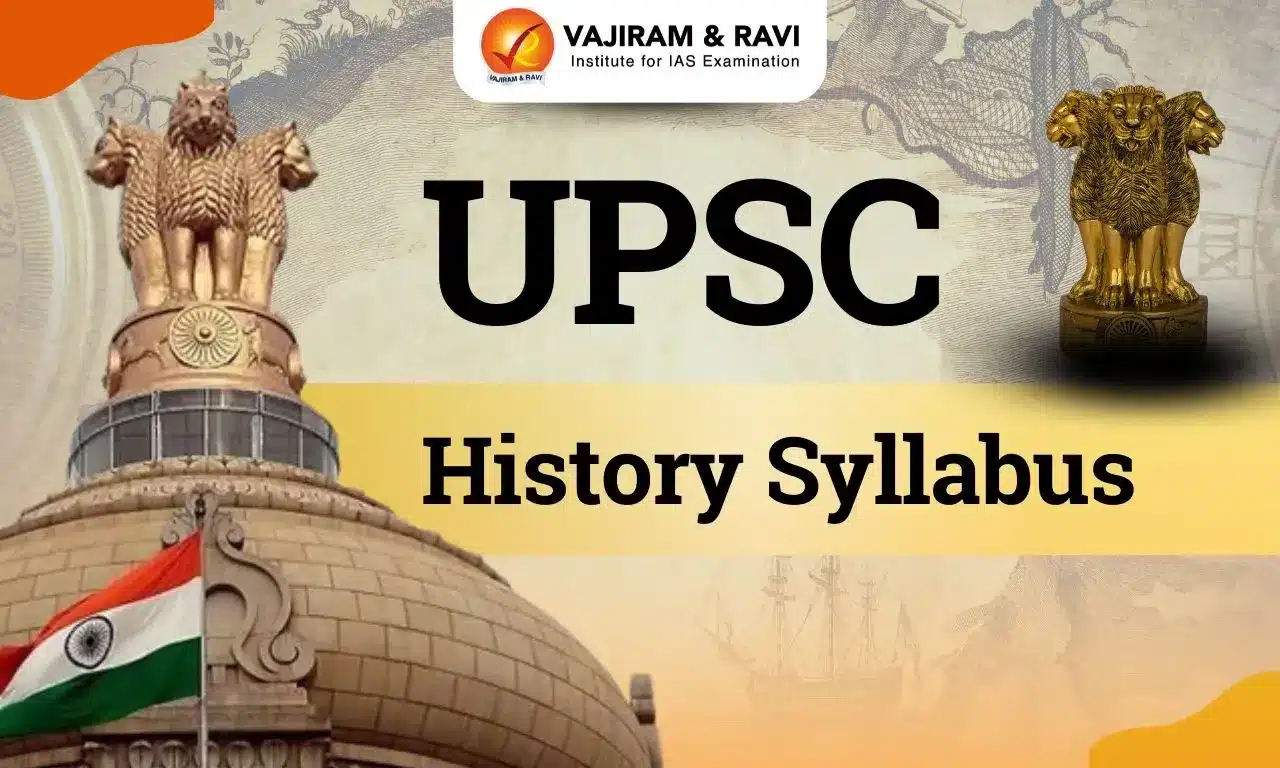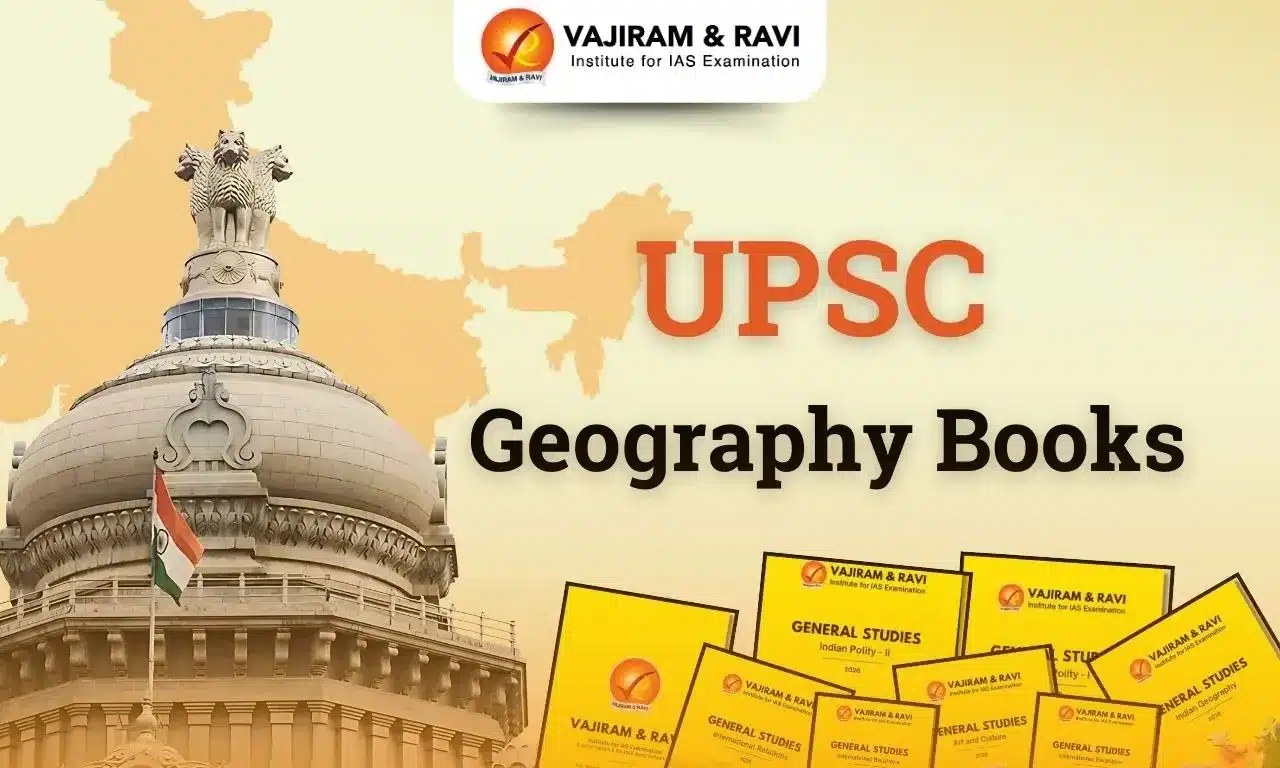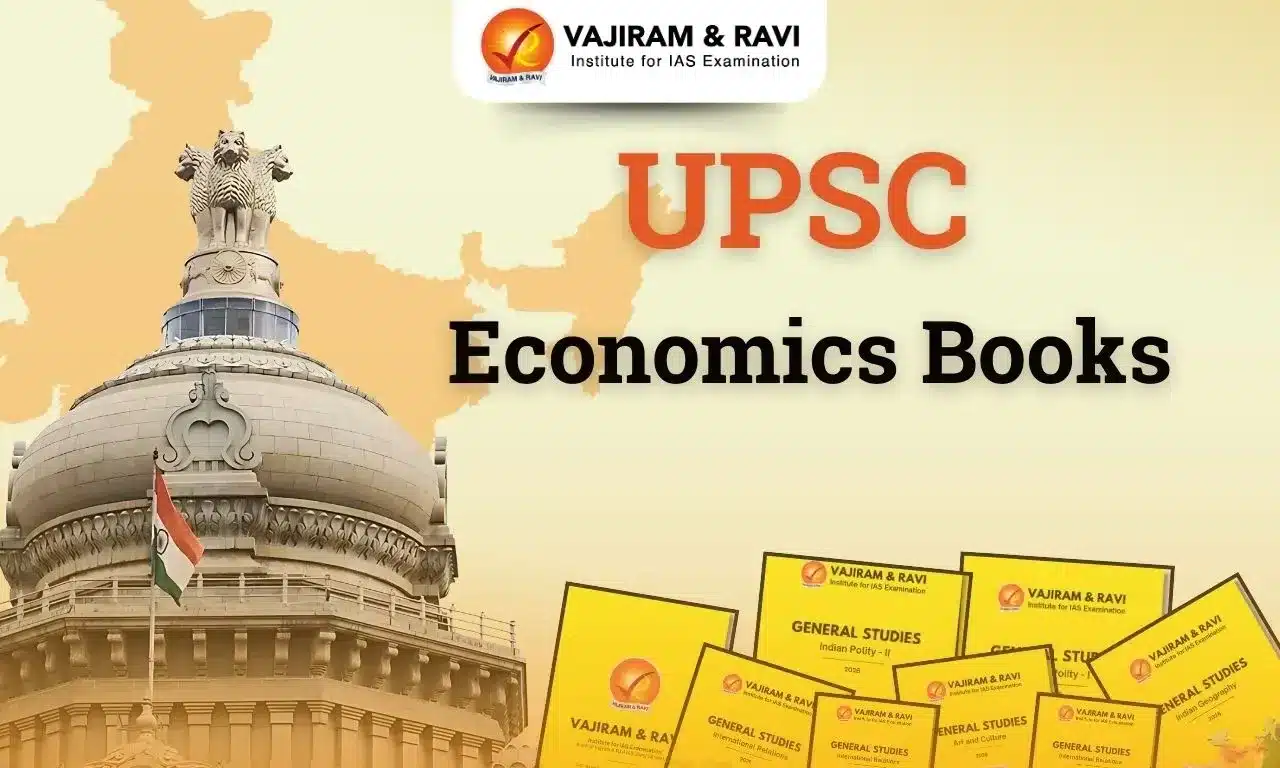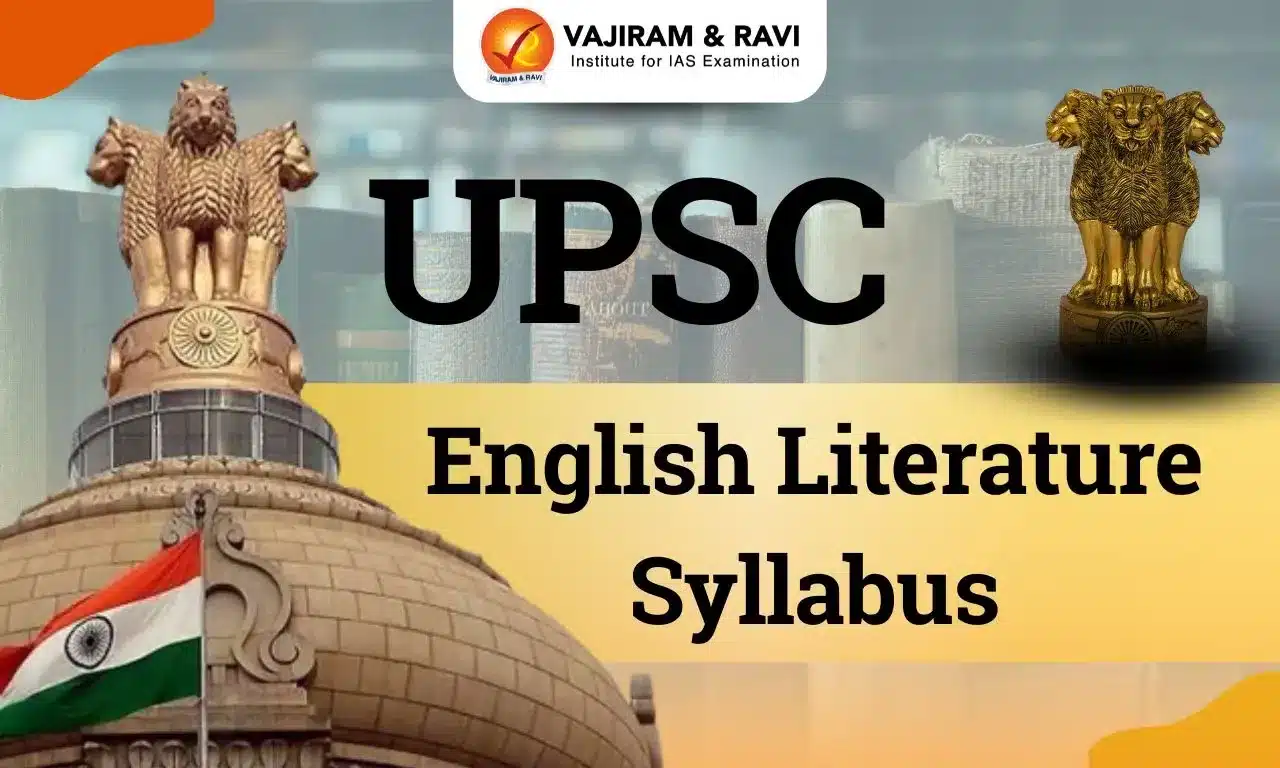The UPSC History syllabus covers a wide array of topics, including ancient, medieval, and modern history, both Indian and world. Aspirants are expected to analyse historical sources, critically assess different perspectives, and develop a comprehensive understanding of various historical processes. The subject demands a combination of factual knowledge and analytical skills.
The UPSC History Optional syllabus offers an in-depth exploration of historical events, periods, and themes. By choosing History as an optional subject, you have the opportunity to delve into the rich tapestry of human history and showcase their ability to engage with complex narratives and draw connections between historical events and broader societal changes.
UPSC History Syllabus for Prelims
The History syllabus for UPSC Prelims, as stated in the official notification, is "The History of India and the Indian National Movement." This broad description can make it challenging to determine what to study for the exam. To help, we have decoded the UPSC History Prelims Syllabus, highlighting all the essential history topics you need to cover for the IAS Prelims GS Paper 1. UPSC Prelims History Syllabus has been divided into following three sections:
| UPSC Prelims History Syllabus | ||
| Ancient History | Mediaeval History | Modern History |
|
|
|
UPSC History Optional Syllabus
The UPSC History Optional syllabus is designed to provide aspirants with a comprehensive understanding of historical events, developments, and interpretations. It encompasses a wide range of topics, spanning ancient, medieval, and modern periods, both Indian and world history.
The UPSC History Optional Syllabus includes themes such as political history, social and economic changes, cultural interactions, and regional dynamics. Aspirants are expected to engage critically with historical sources, historiography, and different historical perspectives. They will delve into topics like ancient civilisations, medieval empires, colonialism, nationalist movements, and post-independence developments.
In addition to factual knowledge, the syllabus encourages analytical thinking, the ability to synthesise information, and the aptitude to present coherent and well-structured arguments in the context of historical narratives. Overall, the UPSC History Optional syllabus demands a thorough exploration of the past and a nuanced understanding of the forces that have shaped societies, nations, and global interactions.
UPSC History Syllabus for Paper 1
- Sources Archaeological sources:
- Exploration, excavation, epigraphy, numismatics, and monuments
- Literary sources
- Indigenous: Primary and secondary; poetry; scientific literature; literature in regional languages; religious literature.
- Foreign accounts: Greek, Chinese, and Arab writers
- Pre-history and Proto-history:
- Geographical factors; hunting and gathering (palaeolithic and mesolithic); Beginning of agriculture (neolithic and chalcolithic).
- Indus Valley Civilization:
- Origin, date, extent, characteristics-decline, survival, and significance
- art and architecture
- Megalithic Cultures:
- Distribution of pastoral and farming cultures outside the Indus,
- Development of community life, Settlements, agriculture, Crafts, Pottery, and Iron industry.
- Aryans and Vedic Period:
- Expansions of Aryans in India
- Vedic Period: Religious and philosophical literature
- The transformation from the Rig Vedic period to the later Vedic period;
- Political, social and economic life;
- Significance of the Vedic Age
- Evolution of Monarchy and the Varna system.
- Period of Mahajanapadas:
- Formation of States (Mahajanapada): Republics and monarchies; Rise of urban centres; Trade routes; Economic growth; Introduction of coinage; Spread of Jainism and Buddhism; Rise of Magadha and Nandas.
- Iranian and Macedonian invasions and their impact.
- Mauryan Empire:
- Foundation of the Mauryan Empire,
- Chandragupta, Kautilya and Arthashastra;
- Ashoka; Concept of Dharma; Edicts;
- Polity, Administration, Economy;
- Art, architecture and sculpture;
- External contacts;
- Religion; Spread of religion;
- Literature.
- The disintegration of the empire;
- Sungas and Kanvas.
- Post-Mauryan Period (Indo-Greeks, Sakas, Kushanas, Western Kshatrapas):
- Contact with the outside world;
- Growth of urban centres, economy, coinage, development of religions, Mahayana, social conditions, art, architecture, culture, literature and science.
- Early State and Society in Eastern India, Deccan and South India (Kharavela, The Satavahanas, Tamil States of the Sangam Age):
- Administration, Economy, land grants, coinage, trade guilds and urban centres;
- Buddhist centres;
- Sangam literature and culture;
- Art and architecture.
- Guptas, Vakatakas and Vardhanas:
- Polity and administration, Economic conditions, Coinage of the Guptas, Land grants, Decline of urban centres, Indian feudalism, Caste system, Position of women, Education and educational institutions; Nalanda, Vikramshila and Vallabhi, Literature, scientific literature, art and architecture.
- Regional States during Gupta Era:
- The Kadambas, Pallavas, and Chalukyas of Badami; Polity and Administration, Trade guilds, Literature; growth of Vaishnava and Saiva religions.
- Tamil Bhakti movement, Shankaracharya, Vedanta;
- Institutions of temple and temple architecture;
- Palas, Senas, Rashtrakutas, Paramaras, Polity and administration; Cultural aspects.
- Arab conquest of Sind; Alberuni;
- The Chalukyas of Kalyani, Cholas, Hoysalas, and Pandyas: Polity and Administration; Local Government; Growth of art and architecture, religious sects, Institution of temples and Mathas, Agraharas, education and literature, economy, and society.
- Themes in Early Indian Cultural History:
- Languages and texts, major stages in the evolution of art and architecture, major philosophical thinkers and schools, ideas in Science and Mathematics
- Early Medieval India, 750-1200:
- Polity: Major political developments in Northern India and the peninsula, origin and the rise of Rajputs.
- The Cholas: administration, village economy, and society “Indian Feudalism”.
- Agrarian economies and urban settlements
- Trade and commerce.
- Society: the status of the Brahman and the new social order
- Condition of women.
- Indian science and technology.
- Cultural Traditions in India, 750-1200:
- Philosophy: Shankaracharya and Vedanta, Ramanuja and Vishishtadvaita, Madhva and BrahmaMimansa.
- Religion: Forms and features of religion, Tamil devotional cult, growth of Bhakti, Islam and its arrival in India, Sufism.
- Literature: Literature in Sanskrit, growth of Tamil literature, literature in the newly developing languages, Kalhan's Rajtarangini, Alberuni's India.
- Art and Architecture: Temple architecture, sculpture, painting.
- The Thirteenth Century:
- Establishment of the Delhi Sultanate: The Ghurian invasions - factors behind Ghurian Success
- Economic, social, and cultural consequences.
- Foundation of Delhi Sultanate and early Turkish Sultans.
- Consolidation: The Rule of Iltutmish and Balban
- The Fourteenth Century:
- “The Khalji Revolution”.
- Alauddin Khalji: Conquests and territorial expansion, agrarian and economic measures
- Muhammad Tughluq: Major projects, agrarian measures, and the bureaucracy of Muhammad Tughluq.
- Firuz Tugluq: Agrarian measures, achievements in civil engineering and public works, decline of the Sultanate, foreign contacts, and Ibn Battuta's account.
- Society, Culture, and Economy in the Thirteenth and Fourteenth Centuries:
- Society: composition of rural society, ruling classes, town dwellers, women, religious classes, caste and slavery under the Sultanate, Bhakti movement, and Sufi movement.
- Culture: Persian literature, literature in the regional languages of North India, literature in the languages of South India, Sultanate architecture and new structural forms, painting, the evolution of a composite culture
- Economy: Agricultural Production, the rise of the urban economy, non-agricultural production, trade, and commerce
- The Fifteenth and Early Sixteenth Century-Political Developments and Economy:
- Rise of Provincial Dynasties: Bengal, Kashmir (Zainul Abedin), Gujarat.
- Malwa, Bahmanids.
- The Vijayanagara Empire
- Lodis.
- Mughal Empire, first phase: Babur, Humayun
- The Sur Empire: Sher Shah’s administration
- Portuguese colonial enterprise, Bhakti, and Sufi movements
- The Fifteenth and Early Sixteenth Century- Society and Culture:
- Regional cultural specificities
- Literary traditions.
- Provincial architecture.
- Society, culture, literature, and the arts in Vijayanagara Empire
- Akbar:
- Conquests and consolidation of empire
- Establishment of Jagir and Mansab systems
- Rajput policy.
- Evolution of religious and social outlook
- Theory of Sulh-i-kul and religious policy
- Court patronage of art and technology
- Mughal Empire in the Seventeenth Century:
- Major administrative policies of Jahangir, Shahjahan, and Aurangzeb
- The Empire and the Zamindars.
- Religious policies of Jahangir, Shahjahan, and Aurangzeb
- Nature of the Mughal State.
- Late Seventeenth Century crisis and the revolts
- The Ahom kingdom.
- Shivaji and the early Maratha Kingdom
- Economy and Society in the 16th and 17th Centuries:
- Population, agricultural, and craft production.
- Towns, commerce with Europe through Dutch, English and French companies: a trade revolution.
- Indian mercantile classes. Banking, insurance and credit systems.
- Conditions of peasants, Conditions of Women.
- Evolution of the Sikh community and the Khalsa Panth.
- Culture during Mughal Empire:
- Persian histories and other literature.
- Hindi and religious literature
- Mughal architecture.
- Mughal painting.
- Provincial architecture and painting.
- Classical music.
- Science and technology.
- The Eighteenth Century:
- Factors for the Decline of the Mughal Empire
- The regional principalities: Nizam’s Deccan, Bengal, and Awadh
- Maratha ascendancy under the Peshwas.
- The Maratha fiscal and financial system.
- Emergence of Afghan Power, Battle of Panipat, 1761.
- State of-political, cultural, and economic—on the eve of the British conquest.
History Optional Syllabus - Paper 2
- European Penetration into India:
- The Early European Settlements;
- The Portuguese and the Dutch;
- The English and French East India Companies, their struggle for supremacy; Carnatic Wars;
- Bengal-The conflict between the English and the Nawabs of Bengal; Siraj and the English; The Battle of Plassey; Significance of Plassey
- British Expansion in India:
- Bengal-Mir Jafar and Mir Kasim; The Battle of Buxar;
- Mysore;
- The Marathas, The three Anglo-Maratha Wars;
- The Punjab.
- Early Structure of the British Raj:
- The Early administrative structure; From diarchy to direct Control
- The Regulating Act (1773);
- The Pitt's India Act (1784);
- The Charter Act (1833);
- The Voice of free trade and the changing character of British colonial rule;
- The English utilitarian and India.
- Economic Impact of British Colonial Rule:
- Land revenue settlements in British India;
- The Permanent Settlement, Ryotwari Settlement, Mahalwari Settlement;
- The economic impact of the revenue arrangements;
- Commercialisation of agriculture;
- Rise of landless agrarian labourers;
- The impoverishment of rural society.
- Dislocation of traditional trade and commerce;
- De-industrialisation; Decline of traditional crafts;
- Drain of wealth;
- The economic transformation of India; Railroad and communication network, including telegraph and postal services;
- Famine and poverty in the rural interior;
- European business enterprise and its limitations.
- Social and Cultural Developments:
- The state of indigenous education, its dislocation;
- Orientalist-Anglicist controversy,
- The introduction of Western education in India;
- The rise of press, literature and public opinion; The rise of modern vernacular literature;
- Progress of Science;
- Christian missionary activities in India.
- Social and Religious Reform Movements in Bengal and Other Areas:
- Ram Mohan Roy, The Brahmo Movement;
- Devendranath Tagore;
- Iswarchandra Vidyasagar;
- The Young Bengal Movement;
- Dayanada Saraswati;
- The social reform movements in India, including Sati, widow remarriage, child marriage etc.;
- The contribution of the Indian Renaissance to the growth of modern India;
- Islamic revivalism-the Feraizi and Wahabi Movements.
- Indian Response to British Rule:
- Peasant movement and tribal uprisings in the 18th and 19th centuries, including the Rangpur Dhing (1783), the Kol Rebellion (1832), the Mopla Rebellion in Malabar (1841-1920), the Santal Hul (1855), Indigo Rebellion (1859-60), Deccan Uprising (1875) and the Munda Ulgulan (1899-1900);
- The Great Revolt of 1857 - Origin, character, causes of failure, the consequences;
- The shift in the character of peasant uprisings in the post-1857 period; the peasant movements of the 1920s and 1930s.
- Factors leading to the birth of Indian Nationalism;
- Politics of Association;
- The Foundation of the Indian National Congress;
- The Safety-valve thesis relating to the birth of the Congress;
- Programme and objectives of Early Congress; the social composition of early Congress leadership; the Moderates and Extremists;
- The Partition of Bengal (1905);
- The Swadeshi Movement in Bengal; the economic and political aspects of Swadeshi Movement;
- The beginning of revolutionary extremism in India.
- Rise of Gandhi;
- The character of Gandhian nationalism; Gandhi's popular appeal;
- Rowlatt Satyagraha; the Khilafat Movement; the Non-cooperation Movement;
- National politics from the end of the Non-cooperation movement to the beginning of the Civil Disobedience Movement; the two phases of the Civil Disobedience Movement;
- Simon Commission;
- The Nehru Report; the Round Table Conferences;
- Nationalism and the Peasant Movements;
- Nationalism and Working class movements;
- Women and Indian youth and students in Indian politics (1885-1947); the election of 1937 and the formation of ministries;
- Cripps Mission; the Quit India Movement; the Wavell Plan;
- The Cabinet Mission.
- Constitutional Developments in Colonial India between 1858 and 1935.
- Other strands in the National Movement.
- The Revolutionaries: Bengal, the Punjab, Maharashtra, U.P. the Madras Presidency, Outside India.
- The Left; The Left within the Congress: Jawaharlal Nehru, Subhas Chandra Bose, the Congress Socialist Party; the Communist Party of India, other left parties.
- Politics of Separatism; the Muslim League; the Hindu Mahasabha;
- Communalism and the politics of partition;
- Transfer of power; Independence.
- Consolidation as a Nation;
- Nehru's Foreign Policy;
- India and her neighbours (1947-1964);
- The linguistic reorganisation of States (1935-1947);
- Regionalism and regional inequality;
- Integration of Princely States;
- Princes in electoral politics; the Question of National Language.
- Caste and Ethnicity after 1947;
- Backward Castes and Tribes in post-colonial electoral politics;
- Dalit movements.
- Economic development and political change;
- Land reforms; the politics of planning and rural reconstruction;
- Ecology and environmental policy in post-colonial India;
- Progress of Science.
- Enlightenment and Modern Ideas:
- Major Ideas of Enlightenment: Kant, Rousseau.
- Spread of Enlightenment in the colonies.
- Rise of socialist ideas (up to Marx); spread of Marxian Socialism.
- Origins of Modern Politics:
- European States System.
- American Revolution and the Constitution.
- French Revolution and Aftermath, 1789-1815.
- American Civil War with reference to Abraham Lincoln and the abolition of slavery.
- British Democratic politics,
- 1815-1850: Parliamentary Reformers, Free Traders, and Chartists.
- Industrialisation:
- English Industrial Revolution: Causes and Impact on Society.
- Industrialisation in other countries: USA, Germany, Russia, Japan.
- Industrialisation and Globalization.
- Nation-State System:
- Rise of Nationalism in the 19th Century.
- Nationalism: State-building in Germany and Italy.
- The disintegration of Empires in the face of the emergence of nationalities across the World.
- Imperialism and Colonialism:
- South and South-East Asia.
- Latin America and South Africa.
- Australia.
- Imperialism and free trade: Rise of neo-imperialism.
- Revolution and Counter-Revolution:
- 19th Century European revolutions.
- The Russian Revolution of 1917-1921.
- Fascist Counter-Revolution, Italy and Germany.
- The Chinese Revolution of 1949.
- World Wars:
- 1st and 2nd World Wars as Total Wars: Societal Implications
- World War I: Causes and Consequences.
- World War II: Causes and Consequences.
- The World after World War II:
- The emergence of Two power blocs.
- The emergence of Third World and non-alignment.
- UNO and the global disputes.
- Liberation from Colonial Rule:
- Latin America-Bolivar.
- Arab World-Egypt.
- Africa-Apartheid to Democracy.
- South-East Asia-Vietnam.
- Decolonization and Underdevelopment:
- Factors constraining Development; Latin America, Africa.
- Unification of Europe:
- Post-War Foundations; NATO and European Community.
- Consolidation and Expansion of the European Community
- European Union.
- The Disintegration of the Soviet Union and the Rise of the Unipolar World:
- Factors leading to the collapse of Soviet Communism and the Soviet Union, 1985-1991.
- Political Changes in East Europe (1989-2001).
- End of the Cold War and US Ascendancy in the World as the lone superpower.
UPSC History Optional Syllabus PDF
The UPSC History Optional Syllabus PDF encompasses ancient, medieval, and modern history, along with world history and art and culture. It includes topics like ancient civilisations, empires, nationalist movements, and historical interpretations. The attached PDF provides detailed information on the UPSC History syllabus, highlighting key themes and periods and aiding candidates in focused preparation.
UPSC History Optional Syllabus- Preparation Strategy
Preparing for the UPSC History Optional syllabus requires a strategic approach to cover the vast scope of historical periods and topics. Here's a step-by-step guide:
- Understand the Syllabus: Familiarise yourself with the detailed syllabus, identifying key themes, periods, and topics to be covered.
- Collect Study Material: Gather recommended history books, reference materials, and previous years' question papers.
- Conceptual Clarity: Begin with foundational texts that provide a conceptual understanding of different historical periods and themes.
- Notes Creation: While studying, create concise and organised notes for each topic. This aids in quick revision.
- Primary and Secondary Sources: Read primary sources like historical documents and secondary sources like scholarly books to gain diverse perspectives.
- Map-based Learning: For ancient and medieval history, focus on geographical changes, trade routes, and empires using maps.
- Case Studies: Use case studies to delve deeper into specific events, personalities, or movements. This enhances analytical skills.
- Historiography: Understand the evolution of historical interpretations. Compare different historians' viewpoints to form a balanced understanding.
- Current Relevance: Link historical events to current affairs. Understand how historical factors influence contemporary situations.
- Practice Questions: Regularly solve UPSC previous year question papers and mock tests to improve answer-writing skills.
- Revision: Regularly revise your notes to reinforce memory and strengthen your grasp of the subject.
- Feedback and Improvement: Seek feedback from mentors, teachers, or peers on your answer-writing style and content.
- Time Management: Develop a study schedule that allocates time for each historical period and topic.
Remember, consistent and dedicated effort is key. Approach the subject with curiosity and an open mind, and ensure your study plan aligns with your strengths and weaknesses.
UPSC History Syllabus- Important Topics
The UPSC History syllabus covers a wide array of topics spanning ancient, medieval, and modern history. Some important topics include:
Ancient India:
- Indus Valley Civilization
- Vedic Period
- Mauryan and Gupta Empires
- Religious and Cultural Developments
Medieval India:
- Delhi Sultanate
- Mughal Empire
- Sufism and Bhakti Movements
- Rise of Regional Kingdoms
Modern India:
- Colonialism and British Rule
- Revolt of 1857
- Indian National Movement
- Partition and Independence
World History:
- Industrial Revolution
- French Revolution
- World Wars and Their Impact
- Cold War and Decolonization
Art and Culture:
- Architecture, Sculpture, and Painting Styles
- Classical Dances and Music Forms
- Literature and Language Developments
Historical Interpretations:
- Study different historians' perspectives on significant events and periods.
Post-Independence India:
- Socio-economic Changes
- Political Developments
- Land Reforms and Economic Policies
Globalisation and its Impact:
- Understanding contemporary challenges and their historical roots.
Remember that while these topics are important, a comprehensive understanding of the entire syllabus is essential. Focus on connecting historical events to broader trends and analyse the impact of historical processes on present-day situations.
| Other Related UPSC Optional Syllabus | ||
|---|---|---|
|
UPSC Animal Husbandry & Veterinary Science Optional Syllabus |
|
|
Last updated on November, 2025
→ Check out the latest UPSC Syllabus 2026 here.
→ Join Vajiram & Ravi’s Interview Guidance Programme for expert help to crack your final UPSC stage.
→ UPSC Mains Result 2025 is now out.
→ UPSC Notification 2026 is scheduled to be released on January 14, 2026.
→ UPSC Calendar 2026 is released on 15th May, 2025.
→ The UPSC Vacancy 2025 were released 1129, out of which 979 were for UPSC CSE and remaining 150 are for UPSC IFoS.
→ UPSC Prelims 2026 will be conducted on 24th May, 2026 & UPSC Mains 2026 will be conducted on 21st August 2026.
→ The UPSC Selection Process is of 3 stages-Prelims, Mains and Interview.
→ UPSC Result 2024 is released with latest UPSC Marksheet 2024. Check Now!
→ UPSC Prelims Result 2025 is out now for the CSE held on 25 May 2025.
→ UPSC Toppers List 2024 is released now. Shakti Dubey is UPSC AIR 1 2024 Topper.
→ UPSC Prelims Question Paper 2025 and Unofficial Prelims Answer Key 2025 are available now.
→ UPSC Mains Question Paper 2025 is out for Essay, GS 1, 2, 3 & GS 4.
→ UPSC Mains Indian Language Question Paper 2025 is now out.
→ UPSC Mains Optional Question Paper 2025 is now out.
→ Also check Best IAS Coaching in Delhi
UPSC History Syllabus FAQs
Q1. How many chapters are there in UPSC history?+
Q2. How many history is in UPSC?+
Q3. Is history difficult for UPSC?+
Q4. What to study for UPSC history?+
Q5. Is NCERT sufficient for UPSC history?+

















